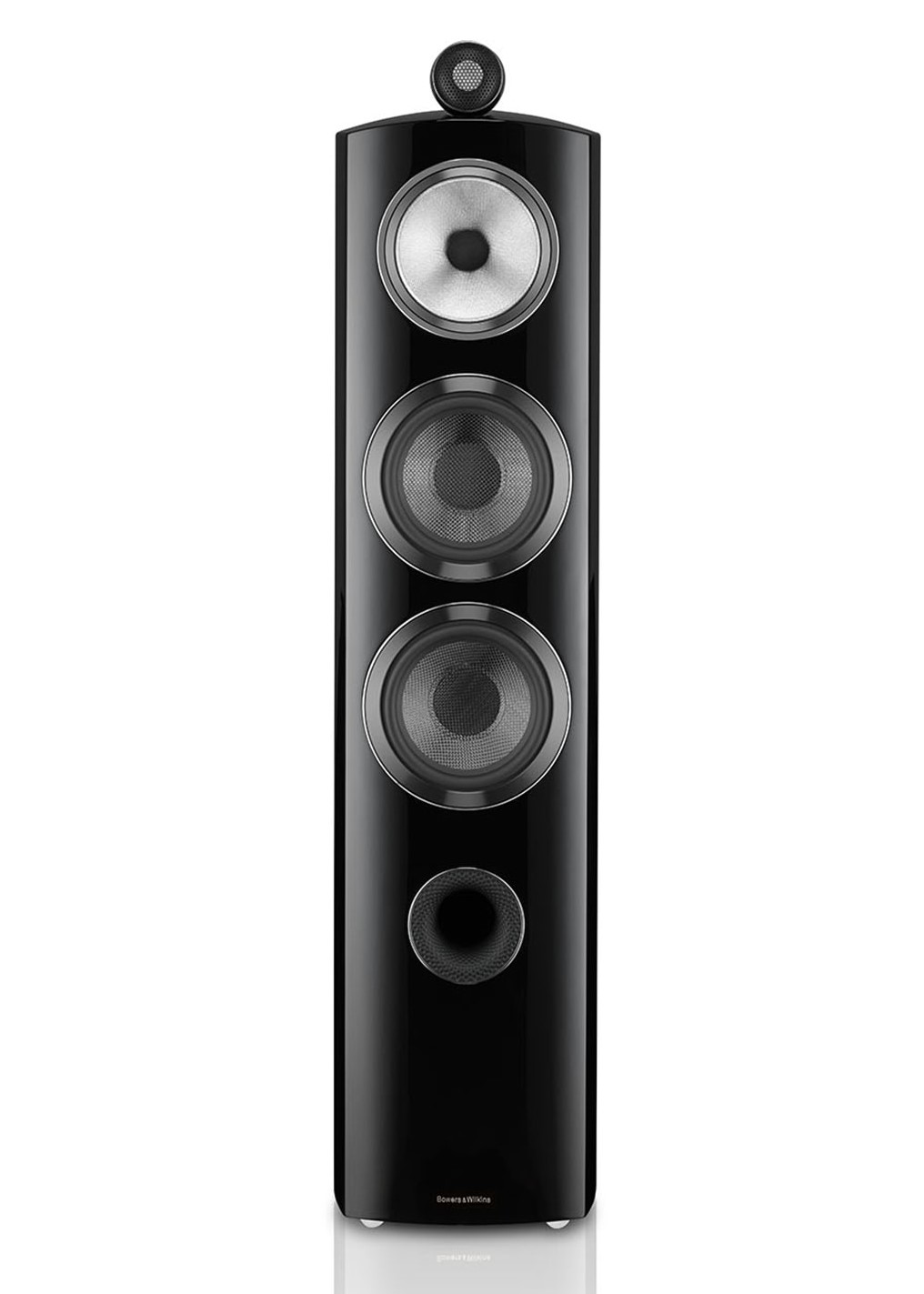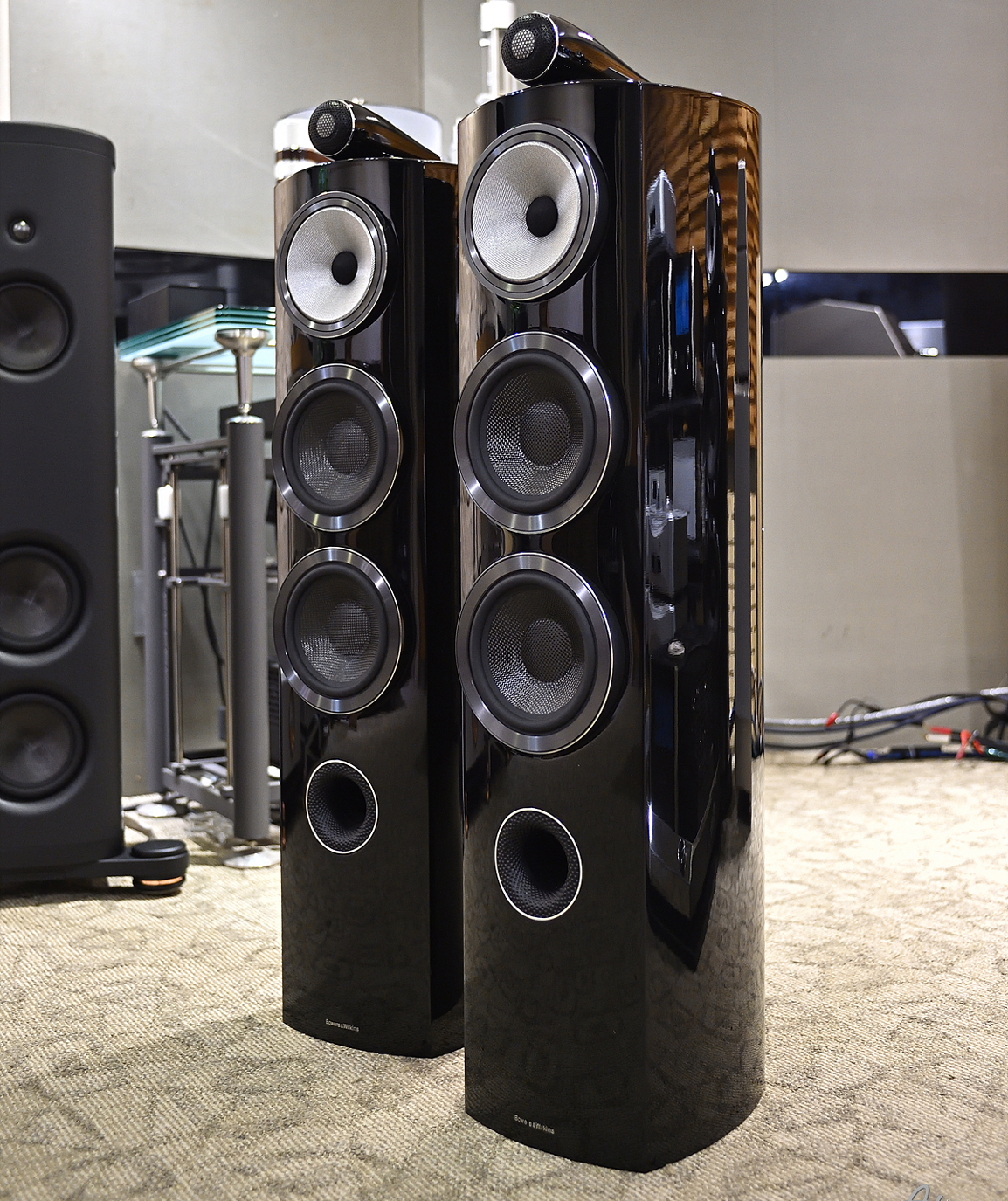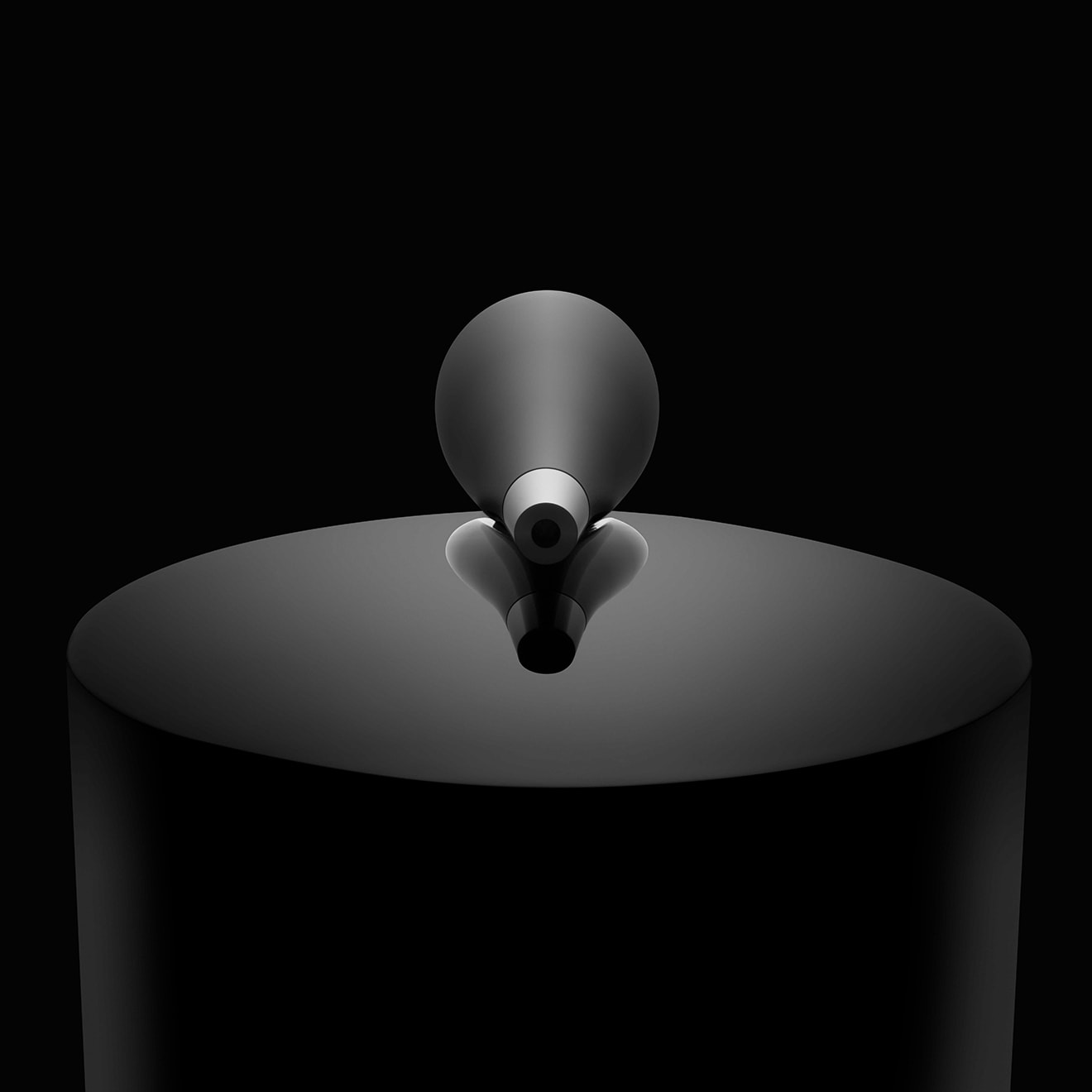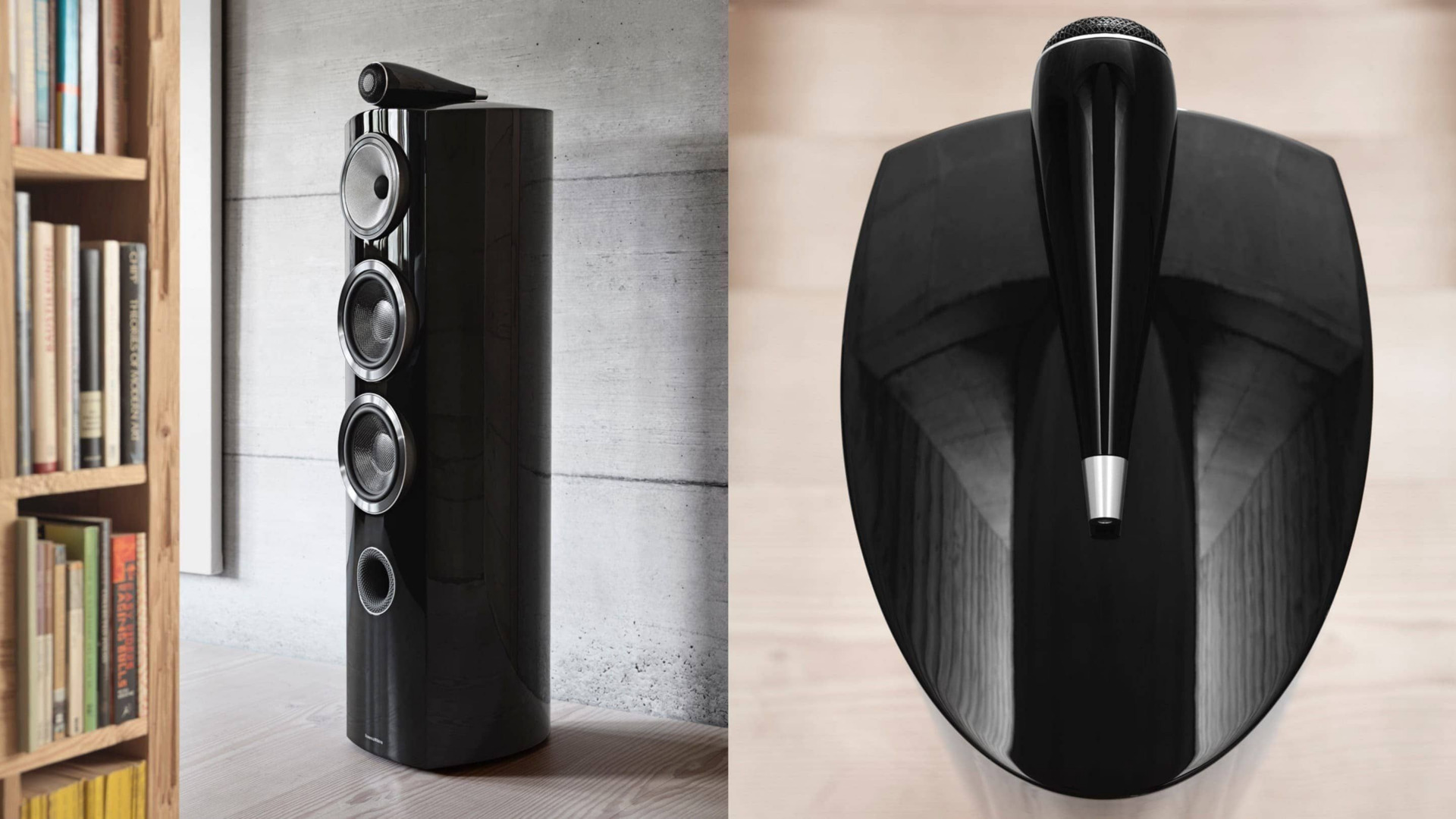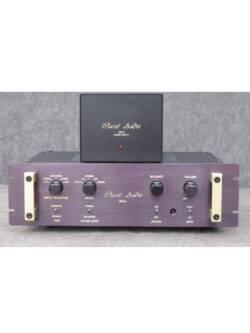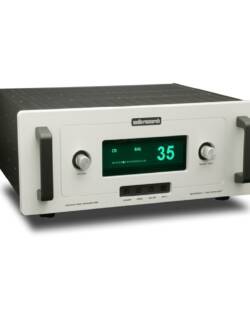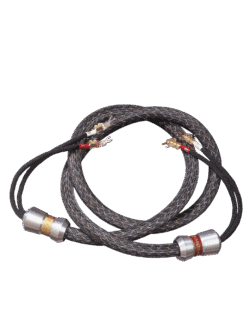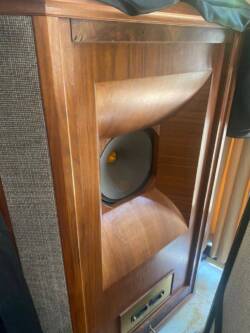B&W 804 D3 Speakers (Piano Black)
Original price was: R240,000.00.R110,000.00Current price is: R110,000.00.
Amazing speaker for the money! MSRP $9000
In some ways, the 804 D3 (and the rest of the new D3 Series) are the speakers I’ve long wished that Bowers & Wilkins would make. Previous 800 Series speakers have relied on midrange drivers made with woven Kevlar cones. Most other speaker makers that have flirted with Kevlar seem to have moved on to other (and, to my ears, better) cone materials, and I’ve long suspected that B&W was sticking with Kevlar because the yellow fabric had become such an iconic part of the company’s branding. The 804 D3 and the other models in the D3 Series now use a silver-colored synthetic fabric named Continuum, which according to B&W has better break-up (high-frequency distortion) behavior than Kevlar. I’ve reviewed at least one speaker from every 800 Series since the original, so I was curious to hear what Continuum sounds like.
Although the 804 D3 resembles past 804s in concept–it’s a tower speaker with two 6.5-inch woofers, a five-inch midrange, and a one-inch tweeter–it shares almost no parts with previous 804s. The woofer cone is also made of a new material; B&W swapped out its old Rohacell composite sandwich diaphragm for a new formulation called Aerofoil. The thickness of the Aerofoil material varies in order to reduce resonance and to concentrate stiffness where it’s most needed.
The deposited-diamond tweeter diaphragm material from the previous 800 Series speakers remains, but the tweeter is now housed in an enclosure machined from a solid piece of aluminum, which should make it denser and less resonant than the previous enclosure. The enclosure, by the way, is attached to the rest of the speaker using a compliant material that isolates the tweeter from woofer and midrange vibrations; you can actually twist the tweeter enclosure a bit.
The enclosure employs the ultra-heavily braced Matrix concept from previous models, with some major differences. The old MDF bracing has been replaced with high-quality plywood, which B&W says is stiffer, and the front baffle now has a slight curve to enhance its stiffness and eliminate flat-panel resonances. The drivers are mounted on “pods” that stick out slightly from the curved front baffle, which should do a bit to help reduce diffraction off the cabinet edges.
The changes in the enclosure design and the midrange driver material make this by far the nicest-looking 804 ever. I borrowed my review samples for a photo shoot that a luxury-goods magazine asked me to produce for them. Usually art directors and photographers consider speakers little more than bland wooden boxes, but in this case everyone thought the 804s looked as sleek as the high-end designer furniture they’d brought in for the shoot.

The 804 D3 lacks the cool combination of integral casters and spikes found on the more-expensive 802 D3 and 803 D3; they allow you to roll the speaker into position then lower the spikes to secure it. However, at 73 pounds, the 804 D3 is pretty easy to move around. Standard threaded sockets are provided for the included spikes or rubbery feet. Buyers of the 804 D3 can take some solace in the fact that their speakers cost roughly half as much as the step-up model, the 803 D3: $9,000 per pair for the 804 D3 versus $17,000 per pair for the 803 D3.
I expect most 804 D3s will find use in two-channel systems; however, if you want to create an 800 Series home theater, you can add one of two center speakers (the $6,000 HTMI1 D3 or the $4,000 HTM2 D3), plus maybe two or four of the $6,000/pair 805 D5 as surround speakers.
 The Hookup
The Hookup
I used the 804 D3 towers with a Classé Audio CA-2300 amp and CP-800 preamp/DAC, in addition to my Music Hall Ikura turntable and NAD PP-3 phono preamp. Connections were made using Wireworld Eclipse 7 speaker and interconnect cables. For level-matched comparisons with other speakers, I used my Audio by Van Alstine AVA ABX switcher.
The 804 D3 is as easy to set up as a typical inexpensive tower speaker. It’s fully assembled right out of the box; all you have to do is add your choice of spikes or rubbery feet and connect the included jumper cables between the two sets of binding posts on each speaker (unless you intend to biwire or biamp then, in which case you don’t need the jumpers).
Setup on these speakers isn’t fussy at all. The tonal balance seemed just right with the speakers in the position I typically use for tower speakers: pointed straight at my listening chair, spaced about eight feet apart at a distance of 10 feet from my chair. Each speaker’s front baffle was 36 inches from the wall behind the speakers.
B&W includes foam plugs that can be used to tune the ports, reducing bass response in situations where it might be overwhelming, such as a small room or when you’re forced to place the speakers near a wall. Neither of those situations applied in my case.
The 804 D3s got lots of use during the review period–in part because I simply enjoyed listening to them, and in part because their stay coincided with a five-day visit from my friend Gordon Sauck, founder and proprietor of Innovative Audio, a huge vintage audio store in Vancouver, BC. During Gordon’s visit, we spent hours listening to vinyl records we’d picked up at Los Angeles’ many used record stores, as well as action movies from my collection of Blu-ray discs.
Performance
If I seemed too reverent in my introduction, trust me, I’m not. I have heard a lot of 800 Series speakers and other B&Ws, in many different environments. Many of those experiences have thrilled me, but a few have left me disappointed, so I came into this review with no particular expectations.
By the time I’d finished the setup of the 804 D3s, I knew I’d like them a lot. Right off the bat, they sounded dynamic and engaging. Even with the system cranked up, I could hear no distortion or signs of distress, and nothing that sounded like an obvious tonal coloration. I started throwing on more records and was happy with the result every time; the speakers didn’t obscure the flaws in the sub-standard records I played, but they didn’t seem to highlight the flaws, either.
I was fortunate to have a pristine, barely played old copy of Stanley Turrentine’s 1966 LP Rough ‘N’ Tumble on loan from a friend when I was doing this review. Just as Turrentine could tell stories in his solos, the first cut, “And Satisfy,” nicely tells the story of the 804 D3. Turrentine’s tenor sax sounded exceptionally intimate and involving through the 804 D3, somehow more focused and realistic–more “in the room with me”–than I’m used to hearing. Everything in the mix just seemed to be a little more “there.” Cymbals stood out very clearly without seeming boosted or bright. Bob Cranshaw’s bass had great pitch definition while also exhibiting a fat, satisfying groove.
Comparison and Competition
I can’t think of a modestly sized tower speaker that I’d prefer to the 804 D3. That said, most towers of comparable configuration cost far less. As I stated above, a very well-engineered cones’n’domes tower speaker like the Revel Performa3 F206 (or the larger F208) may sound somewhat more open, and at $3,500/pair and $5,000/pair, respectively, they’re much more affordable. However, in my experience, neither sounds as comfortable at high volumes as the 804 D3.
Another competitor at a lower price would be the $5,798/pair Thiel TT1, which more or less equals the 804 D3’s fit, finish, and drive complement but lacks the 804 D3’s top-end sparkle and life.
You could also buy a nice big pair of panel speakers for a little less money, including the $5,995/pair Magnepan 3.7i (plus a thousand or two more for a couple of subwoofers) and the $6,995/pair MartinLogan Ethos. They won’t likely match the 804 D3’s dynamics, but they’ll sound a lot more spacious. If that’s the sound you’re looking for, though, you probably aren’t considering the 804 D3. (By the way, I strongly recommend every audiophile own a pair of panel speakers at least for a while. Personally, I’ve never wanted to settle down long-term with a pair of them, but that’s a matter of taste, and you can’t make that decision without long-term exposure to that sound.)
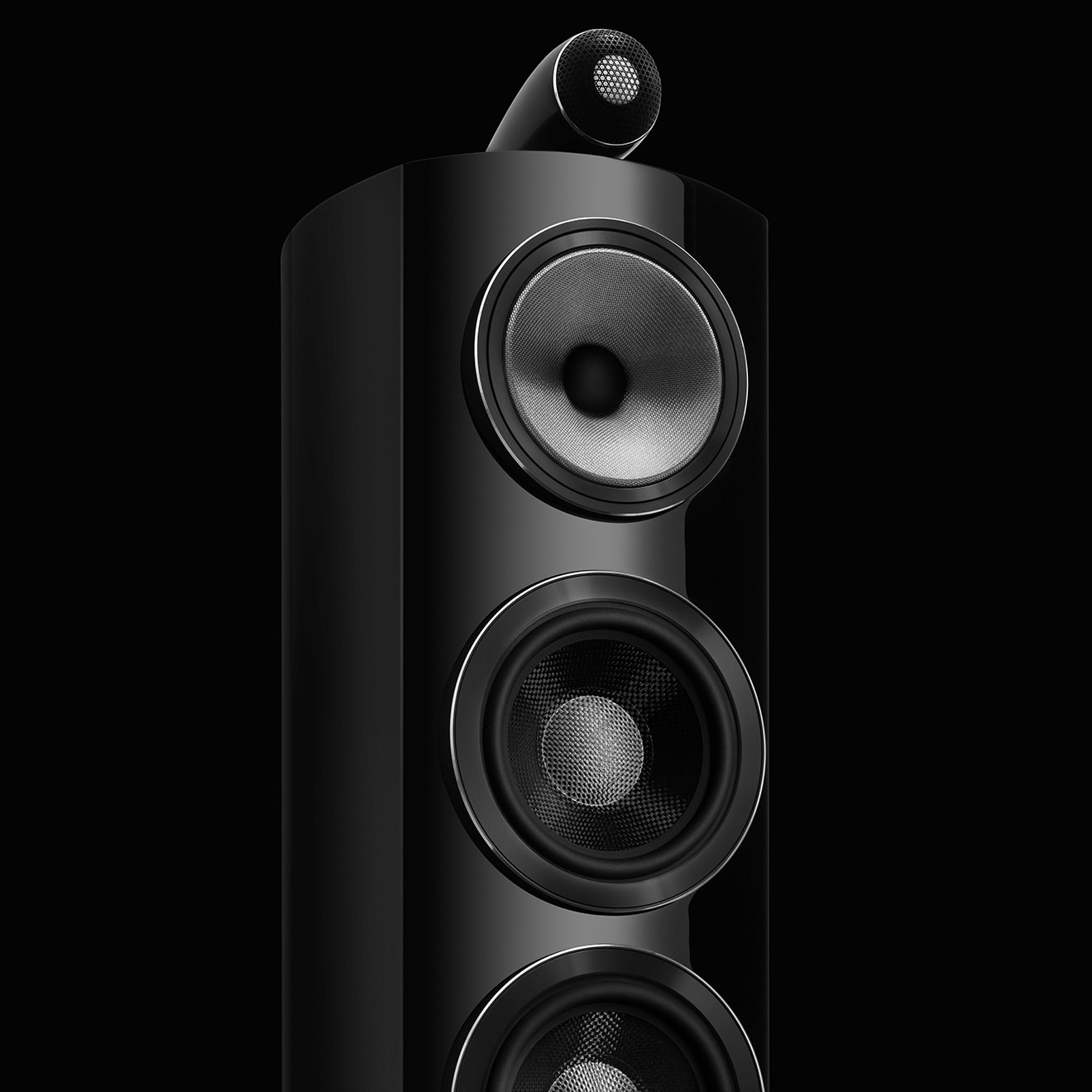
Conclusion
I thoroughly enjoyed the time I spent with B&W’s 804 D3s. From a performance standpoint, I can’t really criticize them. Sure, I can detect a few subtle flaws, but I’ll happily tolerate them for all the many wonderful sonic qualities this speaker exudes. If there is one major downside to this speaker, it’s one my friend Gordon Sauck captured well with nothing more than a facial expression. “These are really nice,” he said after a couple hours of listening. “How much are they?” When I replied “Nine thousand a pair,” his jaw dropped. Yep, the 804 D3s sound great and have an impressive fit and finish, but $9,000 per pair is a lot to pay for a relatively small tower speaker. That being said, I would be very surprised if anyone who can afford that price is disappointed by the result.
Description
Technical features
Diamond tweeter
Continuum™ Cone FST™
Anti-Resonance plug
Aerofoil™ cone bass units
Flowport™
Optimized Matrix
Solid body tweeter
Tweeter-on-Top
Description
3-way vented-box system
Drive units
1x ø25mm (1 in) Diamond dome high-frequency
1x ø130mm (5 in) Continuum™ cone FST™ midrange
2x ø165mm (6.5 in) Aerofoil™ cone bass units
Frequency range
20Hz to 35kHz
Frequency response (+/-3dB from reference axis)
24Hz to 28kHz
Sensitivity (1m on axis at 2.83Vrms)
89dB
Harmonic distortion
2nd and 3rd harmonics (90dB, 1m on axis)
<1 % 70Hz – 20kHz
<0.3% 120Hz – 20kHz
Nominal impedance (min)
8Ω (minimum 3.0Ω)
Recommended amplifier power
50W – 200W into 8Ω on unclipped programme
Max. recommended cable impedance
0.1Ω
Dimensions
Height: 1019mm (not including feet)
Width: 238mm
Depth: 345mm
Net weight
33kg (73lb)
Cabinet finishes
Gloss Black
Satin White
Rosenut
Grille finishes
Black
Grey
